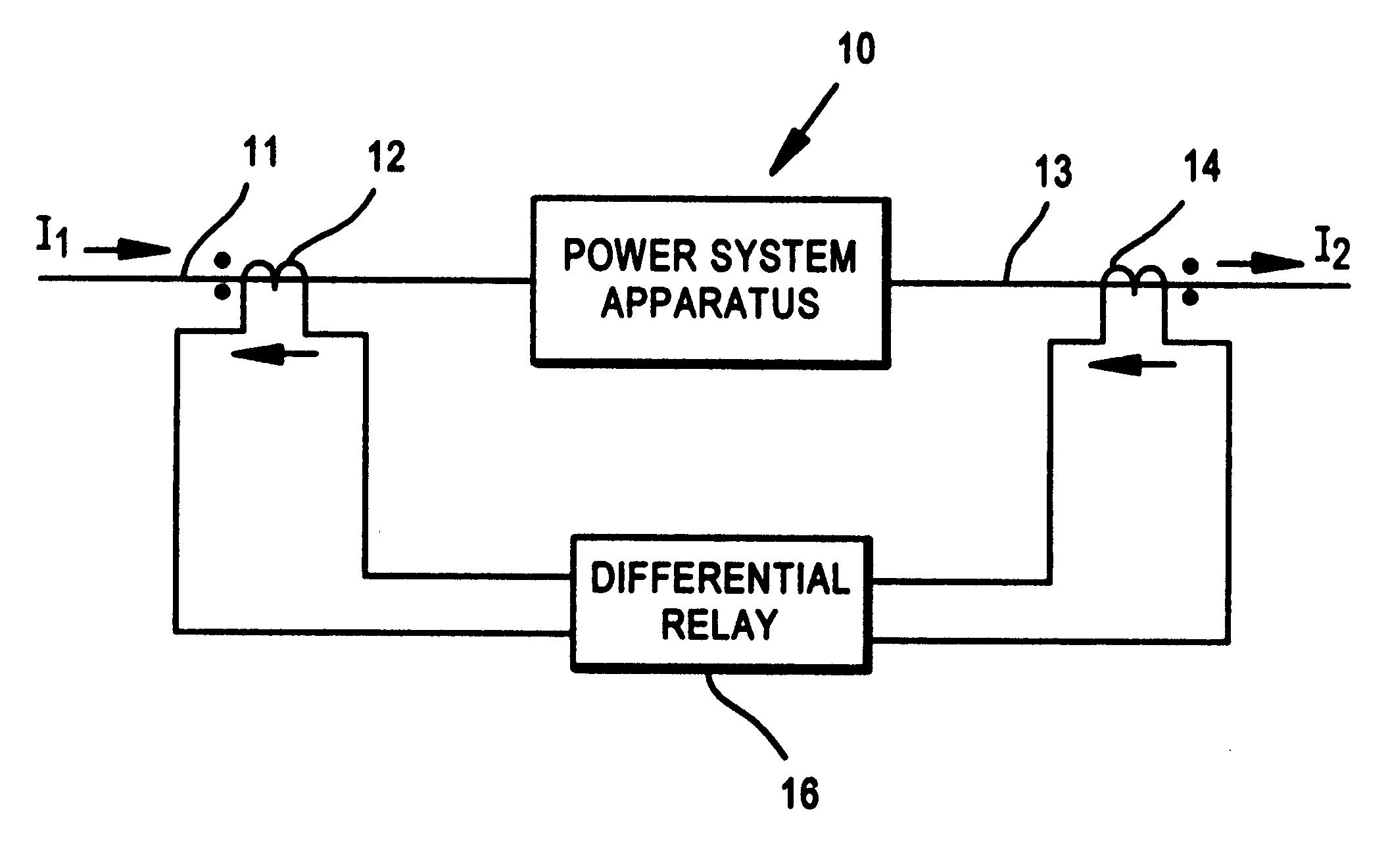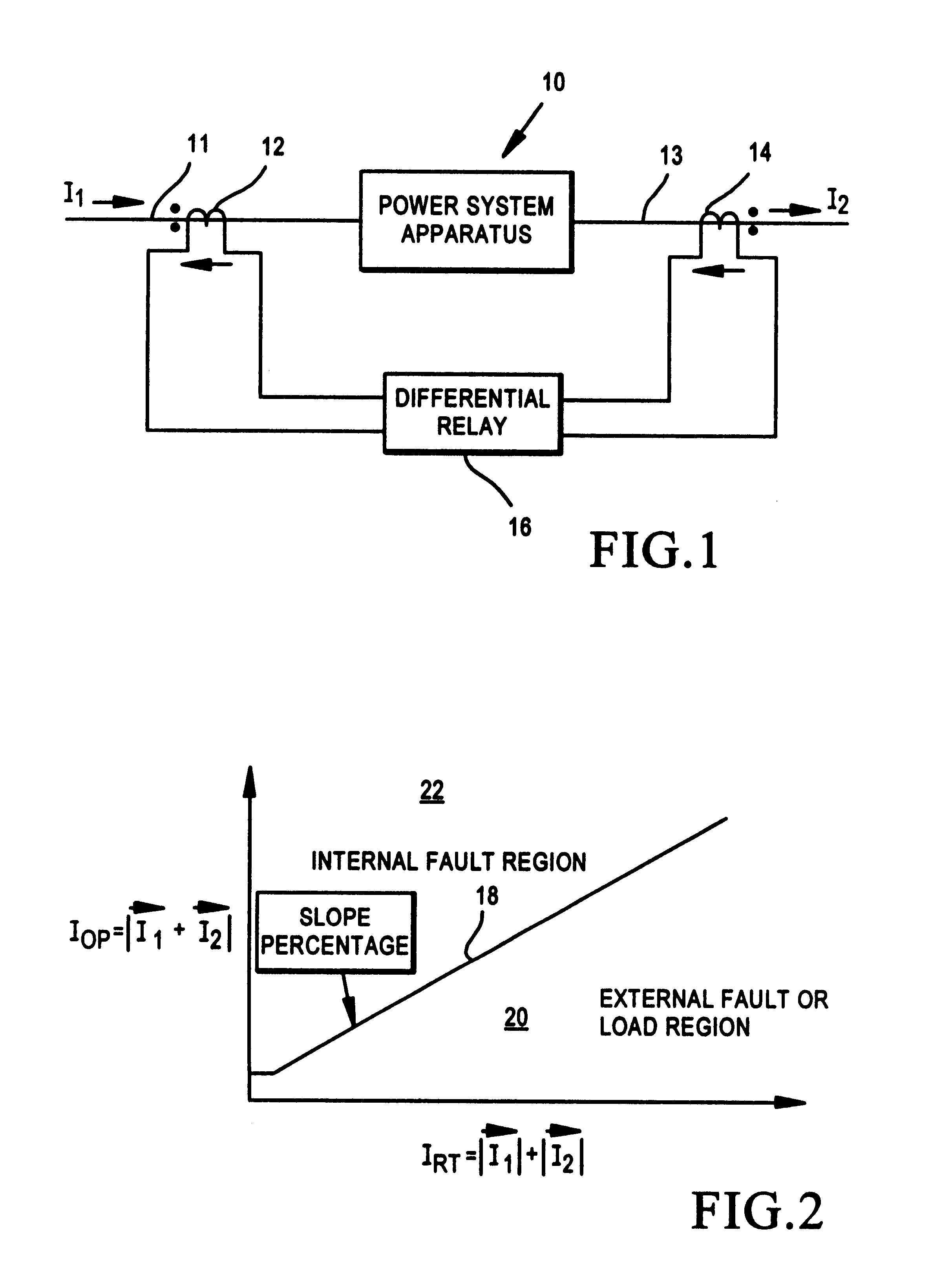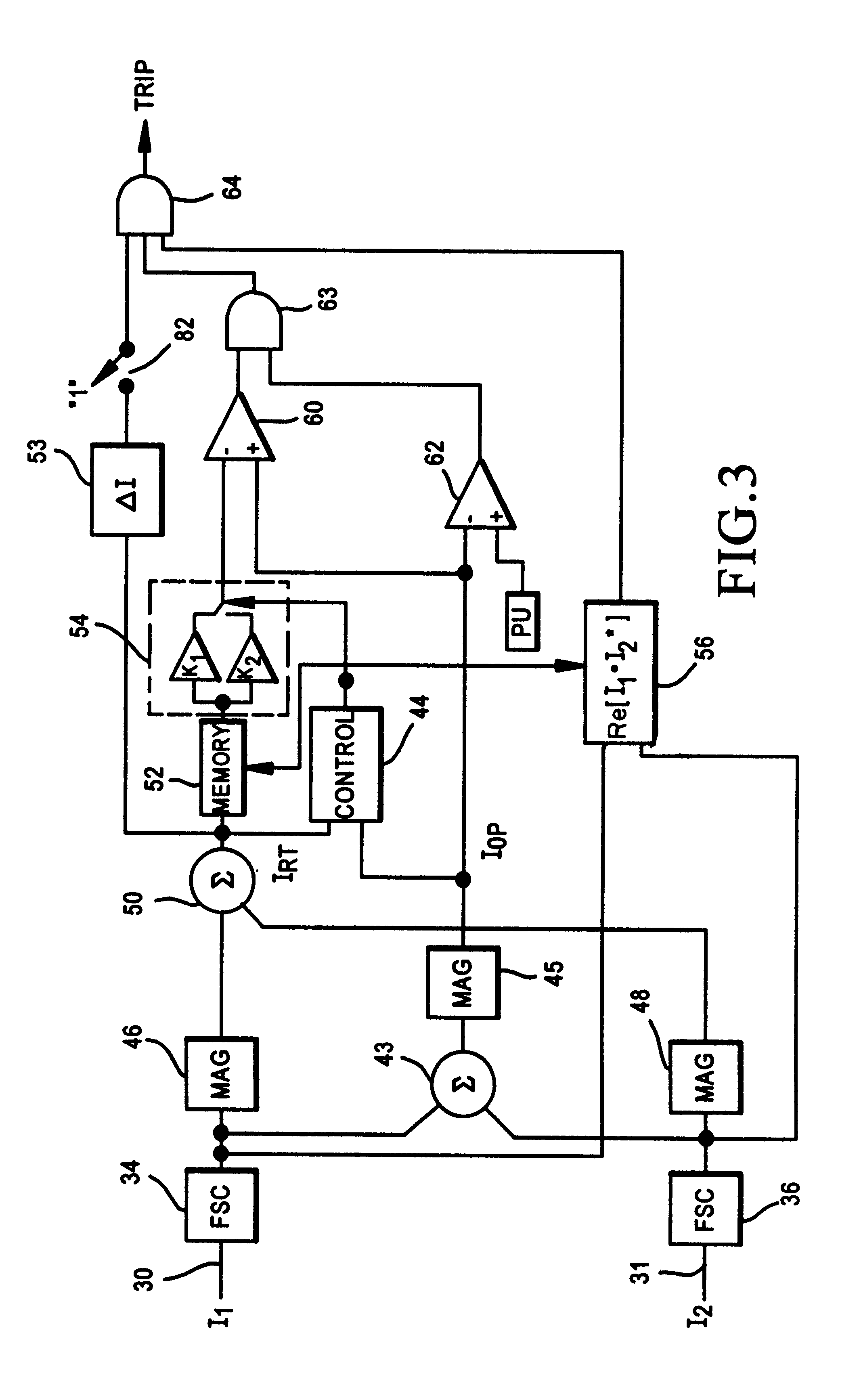Restraint-type differential relay
a relay and resistance technology, applied in circuit-breaking switches, circuit-breaking switches for excess current, electrical apparatus, etc., can solve problems such as ct going into saturation, ct inaccuracy, and course is quite undesirable, and achieve the effect of preventing a tripping signal
- Summary
- Abstract
- Description
- Claims
- Application Information
AI Technical Summary
Benefits of technology
Problems solved by technology
Method used
Image
Examples
Embodiment Construction
Unlike previous restraining-type differential relays, which, upon recognition of an external fault, absolutely block the differential relay from operating (tripping) for a fixed period of time, e.g. 7 cycles, the differential relay of the present invention, upon recognition of an external fault, is designed to prevent relay operation in response to the external fault, but also to permit relay operation if and when the external fault evolves into an internal fault or if and when an internal fault occurs independently within the time that the relay is being blocked in responding to the external fault. The relay is thus in effect "desensitized" from an absolute blocking approach by being responsive to the internal faults while maintaining security (avoiding tripping) in response to the external fault.
The present invention is thus a fundamentally different restraining differential relay. A block diagram of the new restraining differential relay is shown in FIG. 3. The two current inputs...
PUM
 Login to View More
Login to View More Abstract
Description
Claims
Application Information
 Login to View More
Login to View More - R&D
- Intellectual Property
- Life Sciences
- Materials
- Tech Scout
- Unparalleled Data Quality
- Higher Quality Content
- 60% Fewer Hallucinations
Browse by: Latest US Patents, China's latest patents, Technical Efficacy Thesaurus, Application Domain, Technology Topic, Popular Technical Reports.
© 2025 PatSnap. All rights reserved.Legal|Privacy policy|Modern Slavery Act Transparency Statement|Sitemap|About US| Contact US: help@patsnap.com



